Nice info Tom, the internal mechanism to catch the steel clip and load the ammo must be complicated. :neutral:
Infamous? There was nothing infamous about the Bren - one of the finest LMGs ever (as was its parent ZB 26).
Tony Williams: Military gun and ammunition website and discussion forum
Sacrilege :twisted:
Hi.
I know that this is something like a sacrilege but I simply don´t like the ZB 26/Bren style. Limited ammo capacity (yes, I know there was also a larger magazine for the Bren but I prefer belt-fed mg) and relatively high weight. And a bad look, too.
So my opinion against another (I think almost everybody´s) opinion :rolleyes:
But that´s o. t. so let´s discuss this in the General WW II Discussion section…
I´ve forgotten the 8,1 mm round for the Kuwahara revolver
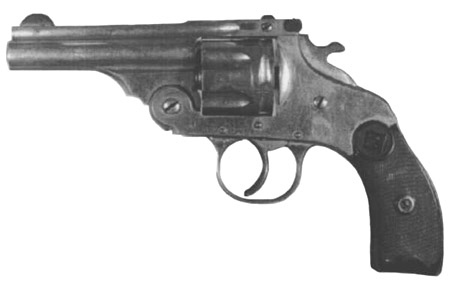

Type Meiji 44 carabine

Type 5 automatic rifle
Yours
tom!
One can clearly see the M-1 lineage in the Type5…
An obvious copy of the U.s rifle. The japanese infantryman was badly needed of more firepower for the platoon mostly equipped with Bolt action rifles.
The Japanese LMG’s had a very major Flaw in mobile operations.
Having being a copy of European LMG’s the tripod which she balanced on when used from a laying down position was designed for full sized adults.
Alot of Japanese were smaller than that.
Thus in ranges greater than very short Range many a burst of LMG would fly above the targets head before the operator got on target.
As the weapon would not be level and aimed upwards without the operator realising.
Saved alot of lifes and comprimised alot of Ambushes.
Many many soldiers speak of bullets bouncing off the tree’s above there head and giving them the chance to seek cover.
In a bunker situation it had no such flaw.
Hi.
Only the type Taisho 11 LMG could be mounted on a tripod.


The type 96 LMG and type 99 LMG only had bipods and later a third “leg” attached at the buttplate.
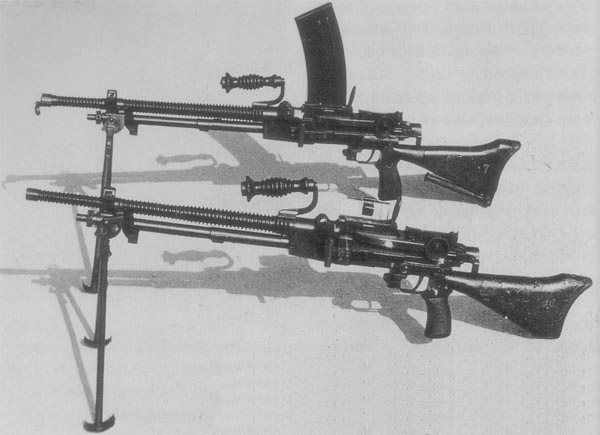
All HMG and the type Taisho 11 LMG had special tripods designed and manufactured by japanese companies so the problem you mentioned may only have occured with the type Meiji 38 6,5 mm HMG after they were adopted in 1905.

Yours
tom!
Hi.
By the way, there was a special mount for the type 91 and type 97 tank MG and later the type 96/99 LMG providing armoured cover for the gunner:



Yours
tom! 
Reading reports from operations in New Guinea and bouganville it just happened time and time again in Japanese ambushes, not sure on the “woodpecker” HMG as it was known but many a combatant reported there life being saved by high initial bursts after being ambushed. They investigate the drama after so many incedents and it was deemed as a result of in a laying position the LMG being designed for full sized caucasion adults.
In fact many observations of Japanese in mobile battles were made.
Kinda impressed by the weapons knowlage on this forum
Tom
The Type 96 was not an adaptation of the ZB26 (though the Type 99 was). It was a completely different action to the Taisho 11 and the ZB series, and was emphatically not just another variant on the Hotchkiss action, as some UK experts state. It utilised a dropping block locking system and a rocking lever ejector (as in the Lewis LMG and Taisho 11), having very much in common with the Russian Simonov AVS36 semi-auto rifle action. It still had no primary extraction or CHS adjustment, necessitating the use of pre-oiled rounds. Other than that, it was a well-made weapon. Is it purely coincidence that it and the AVS36 both appeared in 1936?
Redcoat Pete
Hi.
I studied various sources (german Waffen Revue, article about MG 30(t)/ZB 26; US TME and weapon books, japanese sources) during the last days. All described the type 96 (and also type 99) lmg as a modified and rechambered version of the ZB 26. 
Until now I have no idea what sources your opinion is based on. So please tell me your source. I´m allways interested in new sources.
By the way, Japan bought some 2150 MG ZB 26 in the late thirties and also built up a small scale production in China for local militia.
Yours
tom! 
Hi
You’re right, all the sources say “Hotchkiss” or “ZB Series”, and I believed them, too.
I have the privelidge of working (unpaid!) in a museum that holds, among other weapons, a Taisho 11 AND a Type 96, both of which I have dismantled for conservation and I can say unequivocably that the action of the Type 96 is totally unlike that of the Taisho 11 or the ZB series, but is closely similar to diagrams I have to hand of the Simonov SVA36. I am also VERY familiar with that development of the ZB26 in British (and other) service, the BREN LMG and assure you that there is no similarity in the bolt/breech locking system at all.
Sorry if this keeps you awake nights - that’s life!
The Imperial Japan had Parachute Troops? Are there Pictures of them, which show them in training?
Is Japan still recruiting Paratrooper Units today?
Thanks! 
Hi.
The Japanese Ground Self Defence Force has at least one airbourne brigade which includes parachute troops (No info about organization, sorry).
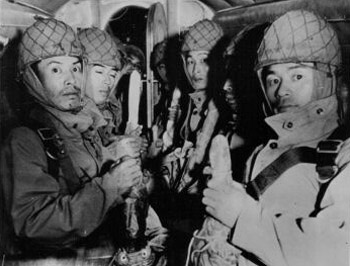
The Imperial Japanese Army had around 16000 airbourne soldiers which were trained in parachute and airbourne assaults. Trainig started 1940. A total of 160 german advisors supervised the jump training in between fall 1940 and fall 1941. In Dezember 1941 one airbourne “division” consisting of two raiding “regiments” with around 2500 men was combat-ready. It was used during the initial stage of the invasion of Sumatra February 1942 as the first “regiment” landed during three days near the oil fields and refineries of Palembang. The task was to secure the refineries and two airfields (a commercial airfield and a military airstrip). Some 730 men jumped, casualty rate was over 80 %, the attack failed to archieve the targets.
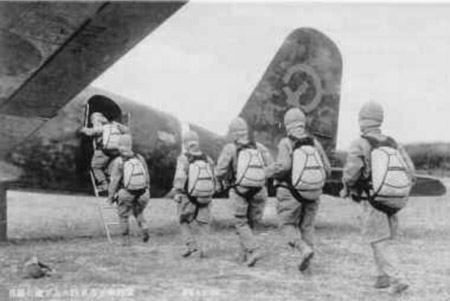
Another landing occured on Timor where at least 400 men jumped to interrupt communication and supply lines. This attack was a success.
In China various small-scale operations (1-35 men) were done. Targets were the destruction of communication and supply and also to “persuade” local militia to change the sides by offering money or assasinating command personel.
During the Leyte operations in late 1944 a lager airbourne assault on US airstrips was launched. At least 2500 men landed on various airstrips (or tried to) using Ki-21 Bombers or Ki-57 transport planes. Most planes were shot down by air defence, the luckier crews were whiped out by ground forces before they could coordinate their efforts.
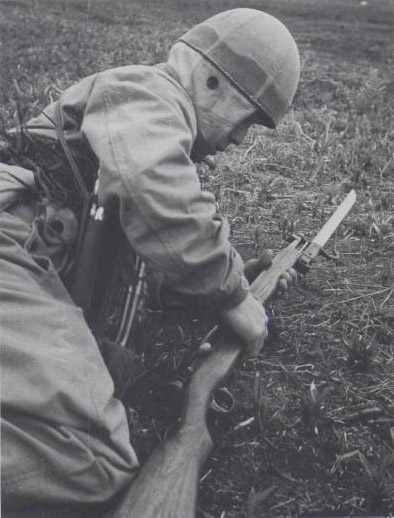
The Imperial Japanese Navy had two trained battalion-size formations , the 1st and 3rd Yokosuka Rikusentai (Special Naval Landing Force) These units received a one week jump training. The 1st SNLF landed near Menado Airfield in the north of Celebes and captured that airfield after a short hard fight. Transport was done by L3M transport planes, the transport version of the G3M land-based bomber. Heavy equipment was transported by flying boats to a nearby sea but arrived after the end of the fightings.
1st and 3rd SNLF suffered from heavy losses due to tropical deseases. After the operations against the NEI both formations were returned to Yokosuka where they were combined to a enlarged formation. The resulting 1st Yokosuka SNLF was used as ground force only and wiped out during the US island hopping operations.

Yours
tom!
Nice Info, I have recently purchased this:

I ll try to post more later.
Jap paras:

Well, I let the link to the pictures, no time now.
